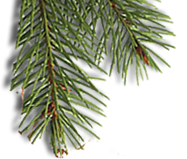Ecology - Invasive Species
In 1999, the Lawrence County Weed and Pest Department initiated its first Comprehensive Weed Management Plan to support the immediate development and implementation of a coordinated noxious weed management program for Spearfish Canyon. The infestation of St. Johnswort and Tansy were spreading at an alarming rate and becoming injurious to the rich bio diversity and scenic qualities of the unique and scenic landscape. Most of the infestation laid within State DOT right of way of the Scenic Byway, and along Spearfish Creek under the auspicious of SD Game, Fish and Parks, and the Black Hills National Forest. The Plan revealed that primary infestation was directly related to vehicular traffic and high water events. St. Johnswort was entering the canyon from the north through high tourist traffic; and Tansy appeared to be entering the Canyon at the convergence of Cleopatra (Squaw) Creek and Rubicon Creek from the eastern slopes, and Iron Creek on the western slope.
Regrettably, the State DOT had suspended roadside management five years earlier when numerous complaints were received from canyon homeowners. The Forest Service did not have the funding required to address the canyon weed issue over an extended time period.
In 2000, the Lawrence County Weed and Pest Department aggressively pursued inter-agency cooperation; and in 2001, formulated and adopted. The Spearfish Canyon Noxious Weed Management District. The Plan thoughtfully and carefully incorporated a strategic blend of bio control, hand pulled, and hand-applied herbicides in a timely and environmentally sound effort that involved State DOT and GFP, Black Hills National Forest, and private homeowners. Current levels of activity include continuous management of the Canyon, rim-to-rim, with focus on a 160-acre area between Cleopatra Creek and Split Rock by the USFS, landowner management of noxious weeds, and a bi-annual 101-acre area along the 20-mile scenic byway by DOT.
In the last four years of planning, strategic focusing, and implementation, the results have been spectacular as these comparative photos show.
 |
Summer 2000
Before Herbicide Application
|
 |
Summer 2003
Before 3rd Herbicide Application
|
| |
|
 |
Summer 2000
Before Herbicide Application
|
 |
Summer 2003
Before |
|


